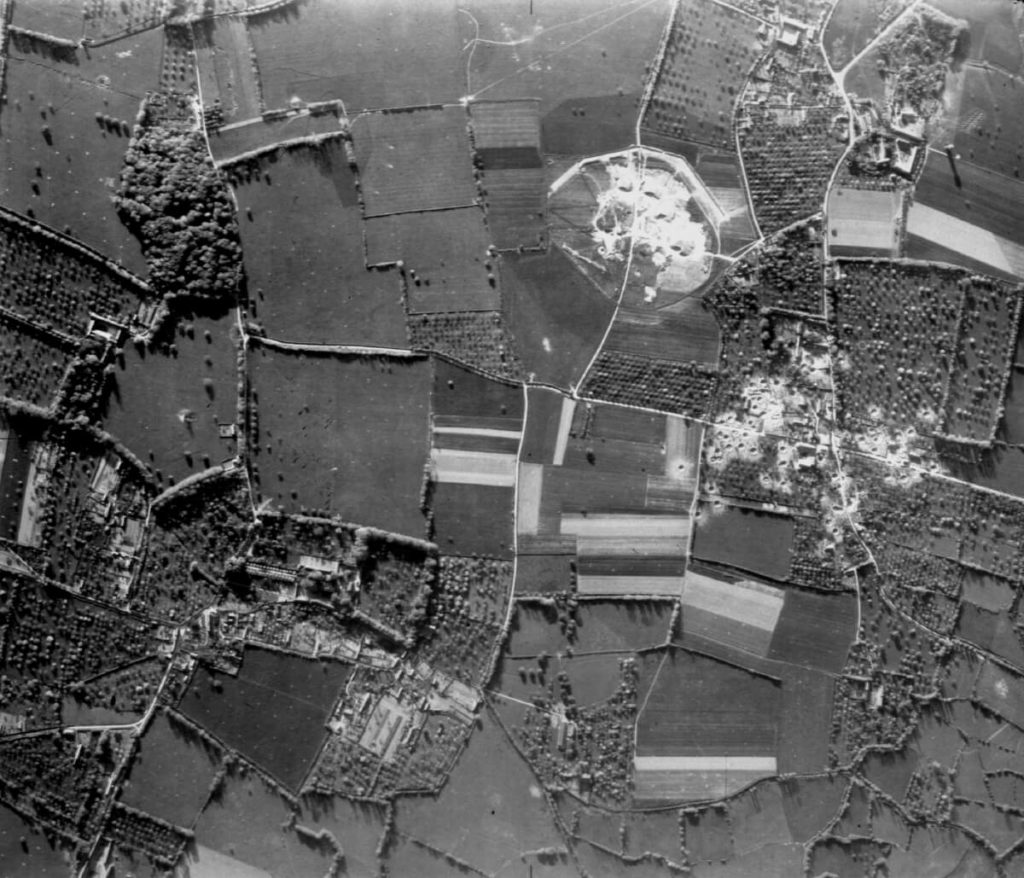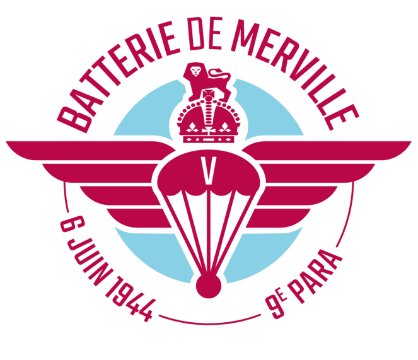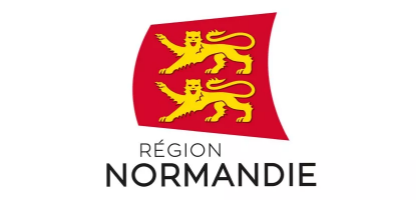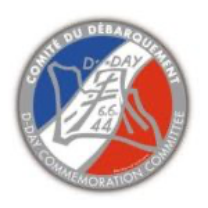Continuing the mission
Accueil » The Museum » The Battery » Continuing the mission
Leaving the Merville battery.
Lieutenant-Colonel Terence Otway’s 9th Battalion was to regroup at Le Calvaire once the Merville Battery had been neutralised. Which it did.
But only about sixty-five of them came together at Le Calvaire.
Lieutenant Colonel Terence Otway could not only reflect on the tragedy that had struck his 9th Battalion. He had managed to neutralise the Merville Battery with only one fifth of his Battalion left. And now regrouped at Le Calvaire, the 9th Battalion, after this unimaginable assault, was further reduced.
Eyewitness accounts describe Lieutenant-Colonel Terence Otway torn between immense anger, which he could barely contain, and deep sorrow.
But he had to command his 9th Battalion in the next stage of the mission.
Thirty minutes later, with orders given, the column was advancing again, progressing silently along a country road. The whole of the 9th Battalion was concentrating fiercely, as every hedge, every tree could conceal an enemy waiting to ambush. All the senses of the men in the 9th Para were on high alert as the terrain made the movement of the column particularly dangerous.
And then, suddenly, there was another immediate danger to the whole of Terence Otway’s 9th Battalion. The deep roaring of bomber aircraft announced the imminence of a bombing raid. The men of the 9th Battalion just had time to get down to the ground before a carpet of bombs was dropped by Lancaster bombers. Lurking in the ditches, heads bowed and huddled with arms crossed over their helmets, the paratroopers of the 9th Battalion, right in the middle of the destruction, waited for the hell of the explosions to end. The entire ground shook and the men were covered in the earth which fell on them. Huge craters opened their flaming jaws, but fortunately no one in the 9th Battalion was hurt. The carpet of bombs ran right along the column headed by Lieutenant-Colonel Terence Otway.





Sallenelles Radar Station
This German Radar Station was to be neutralised
After some time, Lieutenant-Colonel Terence Otway took a decision. He did not want to risk losing any more combatants. He therefore concentrated his forces on the new essential mission: to occupy and hold the so-called Le Plain position. It was a strategic position since this part of Normandy dominates the Orne and the Caen canal as well as the road running from the coast to Caen. This position, if occupied by the Germans, would allow them to keep the Allied bridgehead under fire. And moreover, this route would be the one used by the Commando to link up with and relieve the 9th Battalion.
Lieutenant-Colonel Terence Otway put off his mission to Sallennelles Radar Station and, after giving his orders, headed towards Le Plain.
Amfreville Castle
After departing from their route, Lieutenant Colonel Terence Otway’s paratroopers soon discovered a German position directly ahead. Well-concealed machine guns opened fire and the MGs rained down their bullets at an infernal rate.
Everyone took cover while one paratrooper stealthily made his way to one of the machine guns and put its operators to flight. Lieutenant-Colonel Terence Otway seized the opportunity in a flash and made his men charge. The plan worked and the remaining able-bodied Germans abandoned the position, believing that they were facing a large number of attackers.
Once the Germans were routed, Lieutenant Colonel Terence Otway used his binoculars to detect significant German movements in a hamlet, Hameau Oger, very close to Le Plain. He therefore decided to bypass the Germans to reach Le Plain from the east. Shots were exchanged and the Vickers machine gun mowed down a German counter-attack.
After making progress, he spotted a castle, Amfréville (now gone), not far from Hameau Oger. After reconnoitring, he decided to approach this Amfréville castle from the rear. Not content with just having a roof over his head, Lieutenant-Colonel Otway had the place searched, sentries posted and snipers installed with rifles to spot and eliminate German snipers.
Then, a number of Germans took up positions near the castle and opened fire. Terence Otway did not want to let the enemy realise the precarious state of his battalion.
He therefore launched a group of his paratroopers to attack the building, in which he could still see a lot of activity with his binoculars. Moreover, this German position was in the path of the Commando that was to join them at Le Plain. The attack failed. Lieutenant-Colonel Terence Otway was worried because his men were isolated, ammunition was running low, and it was getting dark.
It is now D+1, 7 June 1944. Some men joined the 9th Battalion but there were still no more than 80 paratroopers. A German machine gun was destroyed. A paratrooper with a scope disturbed a sniper and everyone now stood their ground.
The first elements of the Commando started to fight the Germans in Hameau Oger. Lieutenant-Colonel Terence Otway decided to go and meet the Commando. He met Lord Lovat, still on the banks of the Orne, and worked out with him the plan of action for him to join his 9th Battalion and relieve him. Back with his men, Lieutenant-Colonel Terence Otway knew that he had to hold out until evening.


Château Saint-Côme
The Villa Bois-des-Monts and the vice-like grip of the German counter-attack
It is now D+2, 8 June 1944. The link with the Commandos was successfully made the day before. The isolation was broken and the Brigade ordered Otway to move towards Château Saint-Côme South-East of Breville and of its position. The heights of the Château Saint Côme-Le Mesnil (see map below) had to be held because they controlled the plain extending towards Caen. They had to be held, to form an effective shield on the left flank of the Allied landing.
Under cover of darkness, the 9th Battalion set off on its march.
Lieutenant-Colonel Terence Otway skirted Breville and he and his entire battalion encountered a German column. Everyone hid, letting the Germans pass, because the objective came before the liquidation of this column. The Germans disappeared without even suspecting the presence of Terence Otway’s paratroopers. They continued to progress.
At dawn, they arrived at Château Saint-Côme and found the entrance deserted. Lieutenant-Colonel Terence Otway did not want to run any risks and established his HQ in the Bois-des-Monts Villa, located in the woods opposite the triumphal entrance to the castle. This Villa is marked as “HQ” on the map above. He quickly organised the defence in these woods and concentrated it around the Villa, with 3 companies (see map). At the same time, he sent a reconnaissance team to Château Saint-Côme. It, too, was deserted, but everything shows that the Germans had abandoned it with great haste; they did not even have time to finish their various jobs.
It is now D+3, 9 June 1944, and the day is dawning. Terence Otway requested food and ammunition from Brigadier James Hill. The Germans opened artillery fire as reconnaissance indicated that at least two German companies were holding Breville and appeared to be awaiting reinforcements. Lieutenant-Colonel Terence Otway was soon to face a full German battalion.
Artillery fire continued at night.
It is now D+4, 10 June 1944. The Germans carried out repeated attacks. Fighting was fierce. Lieutenant-Colonel Terence Otway lamented the high numbers of casualties. The Germans also had many casualties. But the German grenadiers did not relent. They now occupied Château Saint-Côme. The commitment was total and the Germans were as close as possible to Lieutenant-Colonel Terence Otway’s defence system. But the paratroopers of the 9th Battalion did not weaken.
Le Mesnil
The 3rd Brigade Headquarters was attacked.
It is now D+5, 11 June 1944. The violence of the German assaults from Bréville and Château Saint-Côme increased. The 5th Black Watch led an attack on Bréville and suffered appalling losses in the face of the fierce German defence. The 5th Black Watch withdrew to Lieutenant-Colonel Terence Otway’s position. Then a message arrived from Brigade Headquarters asking for support: it was being heavily attacked. Lieutenant-Colonel Terence Otway sent four officers and about twenty men. Otway attacked the woods along the road to Le Mesnil where the Brigade Headquarters was located. The Germans entrenched themselves there. Otway therefore launched powerful attacks, with assaults designed to make them abandon their positions. They searched the houses near the Le Mesnil crossroads, and the threat was removed.
It is now D+6, 12 June 1944. The Germans began to line up armour and self-propelled guns to support a battalion that was pushing against the outer defences of Château Saint-Côme, held by the Black Watch.
The 9th Battalion, together with the Black Watch, numbered about two hundred men.
Towards midday, the Germans started a violent cannonade which was to intensify. The whole of the 9th Battalion sheltered as best it could in its holes.
But then, the outer defence of Château Saint-Côme was breached under the relentless German attack. Assault wave after assault wave came from the German forces. The German grenadiers rushed at the parachutists. The mortar guns were burning. Losses were substantial. Both British and Germans flocked to the first-aid post. A seriously wounded senior officer arrived at the Villa Bois-des-Monts Aid Post. He told Lieutenant-Colonel Terence Otway that he had lost two of his battalions as well as armour and guns. Meanwhile, the fighting raged on.
In the evening, as a new wave of Germans swept through the 9th Battalion, Brigadier James Hill arrived with reinforcements in the midst of an apocalyptic situation.
Since midday, the men of the 9th Battalion had held out against German forces who were equipped with artillery and armour and very much greater numbers. The paratroopers’ hard training had enabled them to resist and the Germans learned as they attacked that the men of the 9th Battalion were not ordinary soldiers but men of the Parachute Regiment. They were soldiers of steely determination and remarkable value. Brigadier James Hill, in training, wanted their effectiveness to be their best guarantee for surviving the chaos. And he knew full well that there would be chaos in Normandy.




The bomb at the Château Saint-Côme
A new and dreadful fate
The interminable day of 12 June, marked by overwhelming German superiority of numbers and equipment and by very intense fighting, finally came to an end. In the rigours of its training and in its bravery, the 9th Battalion managed to find the resources necessary to resist the savagery of the fighting. The 9th Battalion managed to hold its strategic position, albeit with many casualties.
As dusk fell, Lieutenant-Colonel Terence Otway completed an inspection of his positions. The unimaginable day of 12 June ended on a brighter note, thanks to the arrival of Brigadier Hills and his reinforcements.
Lieutenant-Colonel Terence Otway talked with 3 officers and a sub-officer on the path in front of the castle. Then comes a German Luftwaffe bombardment.
A bomb exploded and Lieutenant-Colonel Terence Otway was thrown across the road while Greenway and Pond were stunned, McGeever was injured and Christie was killed instantly.
The victims of this bomb were taken to the first aid post at Villa Bois-des-Monts as emergency cases.
The night of 12 June was to prove decisive. The 12th Parachute Battalion and the Devon attacked from the north and the Germans were defeated and abandoned their positions.
On the morning of 13 June, Terence Otway regained his senses, lying in the Aid Post at Villa Bois-des-Monts.
At midday on 13 June, the 9th Battalion was relieved at Château Saint-Come by the 52nd Oxfordshire and the Buckingham Light Infantry.
Lieutenant-Colonel Otway joined his battalion in the Headquarters at Le Mesnil. Once they arrived, Terence Otway was ordered to protect the Headquarters in front of the Le Mesnil crossroads. It wasn’t time for his Battalion to rest yet.
On 14 June they took up their positions, and on 15 June Brigadier James Hill in his quarters offered his turn for Lieutenant Colonel Terence Otway’s birthday. On 15 June 1944, Lieutenant Colonel Terence Otway was 30 years old.
A few days later, the 9th Battalion was placed on reserve.
It was at this point that Lieutenant-Colonel Terence Otway started suffering severe physical symptoms: a feeling of total despondency, loss of balance, black spots before the eyes, excruciating migraines and hypersensitivity to noise.
His companions persuaded him to consult the Royal Medical Corps. Which he duly did.
And it was Major General Richard N. Gale himself who came to tell Terence Otway the doctors’ verdict a few days later. The bomb that fell on the evening of 12 June had caused very serious internal injuries, and Lieutenant Colonel Terence Otway was to be relieved of his command.
This news was the worst thing that could happen to Terence Otway. He was very deeply, indeed intimately affected. His raison d’être was slipping away from him..
This new injury was the second major trauma to hit Lieutenant-Colonel Terence Otway in Normandy.
During his convalescence, he was awarded the Distinguished Service Order.







